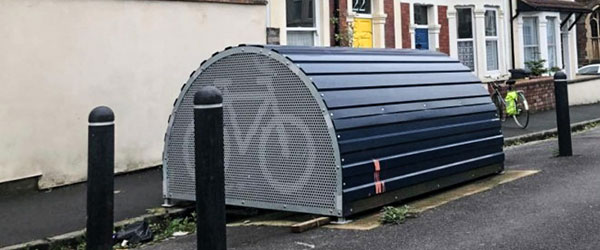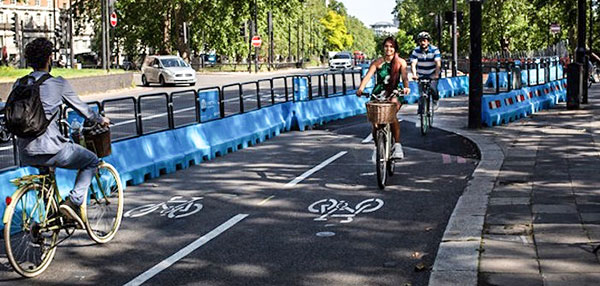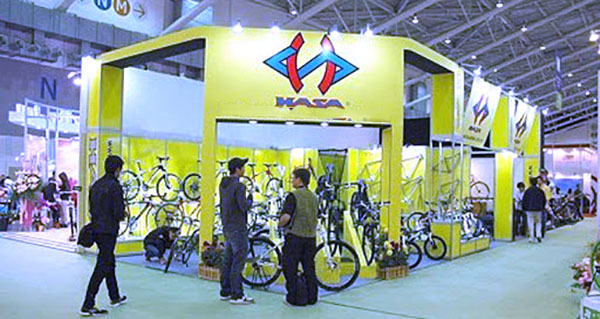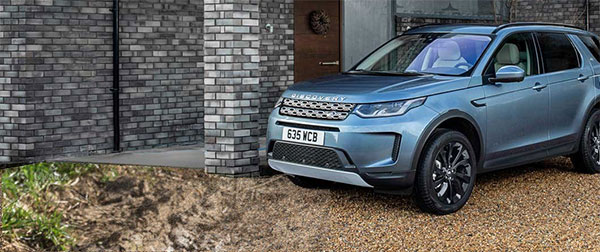
..........................................................................................................................................................................................................
planning ahead

an elderly couple of my acquaintance purchased an empty cottage on the island a number of years ago, with the intention of refurbishing it before selling their bowmore house and moving in. it was a delightful little cottage, with a small burn running alongside, and set back from the road enough to afford a small front garden, bounded by a stone wall. however, these dreams fell foul of the obscure and obfuscating regulations of the local planning authority, who stated that the ground surrounding this cottage offered insufficient parking space, despite the fact that this was to be a home for only two people. you could likely have parked a 40ft tanker at the rear of the house, along with two cars at the side.
quite how this was insufficient for two people, neither they nor i fully comprehended. it transpired that the only way round such bizarre regulations, was effectively to demolish the existing cottage, and build a completely new house, a sad state of affairs considering the delight of the original cottage.
those planning regulations apparently also apply to any new builds, with a recent bout of social housing constructed in bowmore, subject to a two parking spaces per dwelling imposition, even though several are one bedroom flats. considering the number of vehicles owned or used by contemporary families, the planning demand perhaps is less iniquitous than it may at first seem. several of those who live near the croft have one car per person in a family of four, despite the fact that many work in the village (one mile end to end), and have no earthly need of a car in the first place. i take the point that the majority who use a works van need to take it home each evening and park it nearby, but the number of cars in a nearby car park has multiplied out of all proportion over the last decade.
yet here we are today, heading towards an e-car future and a need to seriously reduce greenhouse gas emissions, and planning has not yet taken into account the future need for charging points. with many of the houses constructed in terraces of four dwellings, yet without immediate parking, it's possible that an electric future will result in snaking cables all along the footpaths leading to the communal car park. part of the more recently built housing consists of upstairs and downstairs flats, entertaining the possibility of cables exiting upstairs windows and dropping to the pavement, or coiling to the car parks at the gable ends.
health and safety anyone?
however, as cyclists, such future factors are surely of little concern? most e-bikes feature removable batteries that can be taken inside to charge, while those that remain a fixed part of the frame, could probably be catered to by installing electricity in the garage or bikeshed. but at some point, there's the likelihood of cyclists living in flats that are more than a single storey above ground level, with little or no space in which to store even one bicycle, let alone the fleets that several of us own. and despite the encroaching green issue, which affects each and every one of us, i'm unaware of any planning authority that places demands for cycle parking facilities alongside newly built dwellings.
granted, not everyone owns a bicycle, but precisely the same could be said about motor cars. mrs washingmachinepost and i do not own a vehicle, and there are several others in the immediate neighbourhood who are also bereft of automobile. yet the parking space rule is effected region-wide, so why not one that accommodates cycling needs? bristol cycling campaign is currently lobbying the city council to install 1,000 steel bike hangars within the next three years, pods which store up to six bikes and provide secure, on-street bike parking for those with no space to store a bike at home. as a spokesperson for bristol cycling said, "if you can't securely store a bike at home, you can't have a bike." and it's really as simple as that.
with both westminster and holyrood eager to promote active travel, keen to have commuters cycle to and from work, school or the shops, rather than use the car, isn't it about time that the planning authorities took this emerging factor into account when issuing demands to house builders? instead of demanding that random houses feature 'dummy' chimneys to equate with existing buildings, would it not be a tad more pragmatic to consider future transport demands, including bicycles?
to paraphrase lord voldemort, 'it's not all about the car.'
monday 22 march 2021
 ..........................................................................................................................................................................................................
..........................................................................................................................................................................................................checks and balances

modern day manufacturing includes what i believe is referred to as jit fabrication, an abbreviation for just in time. this allows manufacturing to hold lower amounts of stock, and to adapt to demand, just in time. so, aside from the forward planning necessary to accommodate regular manufacturing processes, careful stocking of componentry allows certain businesses to react to sudden or unexpected changes in the marketplace, arguably making them a tad more resilient.
for instance, if i produce orange widgets, and stock only orange parts and accessories, imagine the turmoil to be endured if blue widgets suddenly find favour with a fickle public. if i'm holding a large inventory of orange, changes such as the hypothetical one outlined above, would likely leave me with a lot of redundant stock. but of course, the phrase just in time is applicable to many other situations, not least the saturday or sunday morning ride.
unlike professional teams, who have an army of mechanics to take care of the bicycles in advance of expected demands, you and i must rely on ourselves, not always the best choice. were wout van aert to come down to breakfast on the day of a time trial to discover that his time-trial bike was still to be found at the back of the truck, untouched since his previous event, i doubt he'd be best pleased. and nor, indeed, would the team management.
we, on the other hand, hold a distinct habit of returning from a wet and windy sunday morning ride, dismount at the garden gate, and unceremoniously, shove the bike into the shed, eager to have a hot shower and some lunch. it would usually be the following saturday (unless him or her indoors finds a set of chores) or sunday, before the bicycle is once again retrieved. i know it will lower my standing in your estimation when i admit that, not only have i found the ritchey to resemble a field close to loch gorm, but sporting a chain the colour of which was not advertised on the packet.
the obvious solution would be a determined level of propriety at the end of each ride, but i think we're all guilty of paying less attention at that point than we really should. i recall riding in provence at the launch of rapha travel (now, sadly defunct), where on return from a wet and windy ride, there was a mechanic waiting patiently to relieve us of our machinery, and fettle it within an inch of its life. thus, the following morning, when once more we set sail into the countryside, it was aboard a clean, shiny and mechanically perfect pinarello dogma. oh, those halcyon days of yore.
in the current reality, it has been frequently a case of just in time adjustments, having need of shining the chain, checking the tires and inflating the same, only minutes before meeting with the rest of the peloton, ready to do battle once again. life really ought not to be like that, but more often than not, it is.
that clicking noise that affected the bicycle last sunday, and which ought to have been examined on sunday afternoon, has now become louder and mechanically irritating. had it been checked at the time, replacement parts could probably have been ordered during the week and fitted on saturday morning. just in time. i'm not sure i'd believe anyone who tells me otherwise.
i can but admit that the inspiration for the above was the thought, as i returned to the croft, that i'd scarcely once looked at the treads on my tyres for nicks or cuts. given the current state of the roads, and the fact that spring's agricultural antics have already begun, it would surely have been prudent to have had a good look at the treads before leaving home. and it dawns on me that, as i write, such an examination has still not taken place. i suppose it'll have to be done in the morning, just in time. much as it pains me to say it, please don't do as i have not done.
sunday 21 march 2021
 ..........................................................................................................................................................................................................
..........................................................................................................................................................................................................not a popular point of view

according to transport minister, chris heaton-harris, the much vaunted enthusiasm for cycling ought to be supported and encouraged, as the uk heads towards moving out of covid lockdowns, both north and south of the border. granted, i know not of any similar statement from scottish transport minister, michael matheson, but i'm giving him the benefit of the doubt, and assuming that he'd be likely to concur. reputedly there is 'huge interest' in so-called active travel, with both westminster and holyrood keen to invest apparently lucrative sums in encouraging this state of affairs.
on the face of it, this makes perfect sense, coinciding as it does with rishi sunak's lowering of both the financial subsidy for electric cars (which, admittedly doesn't necessarily make sense), along with a lowering of the value of vehicles that qualify for this assistance. glasgow is set to host this year's environmental conference, one which will be told that the world needs to move towards zero emissions a darned sight more quickly than its current efforts. several car manufacturers have already planned to phase out diesel and petrol cars within the decade, and have recently expressed no little despondency at the apparent lack of government support.
sadly, at every turn, the phrase 'government support', seems to raise its ugly head, apparently insistent that the freedom for which we have long petitioned against the 'nanny state', be turned upon its head. i can but admit that wholly electric cars are not particularly cheap, but the sight of jaguar, bmw, audi and a slew of asian-made suvs, even in the rural idyll, would tend to suggest that the wherewithal to purchase expensive motor cars is not exactly lacking. so why the government should have to offer a state-funded discount is quite beyond my ken.
but neither should cycling, in my humble opinion, get off scot free. imr heaton-harris' statement that "We do need to make sure we keep people's newfound love for walking and cycling." is one with which i truly couldn't agree more, but why should that be the remit of any government? yes, installation of facilities such as footpaths and cycle-lanes is not the sort of thing just anyone one can undertake; i fear the planning authorities may take a dim view of cycling vigilantes with a jcb, carving their own cycle lanes into the roadside. but the question persists, why is it the government's responsibility to encourage folks to walk and cycle.
i'd be in complete agreement with the notion that implementation of cycling facilities might well be likely to encourage more folks to ride their bikes, but on the basis that the transport minister referred to a 'newfound love' of cycling and walking, i feel both westminster and holyrood have arguably done their jobs. their work here is surely done? a work colleague who owns an e-bike, valiantly cycled the 16km to work on one day this past week, in heavy drizzle and a headwind, then cheerfully (i think), cycled the same route home after work.
nobody forced her to buy an e-bike, nobody forced her to ride to work, and nobody provided specific facilities tht enabled her to do so. granted, the rural idyll provides benefits unavailable in urban regions and inner-city roads, but if we might assume that those who have adopted the way of the saddle, did so for reasons of pragmatism, exercise or the sheer joy and freedom of pedalling, why do they now need encouragement? those i know who ride bicycles, do so entirely of their own volition, and have continued so to do without much in the way of persuasion. granted, the islay peloton would be easily outnumbered by the customers in bowmore averagemarket, at any time of the day, but here isn't there.
surely the responsibility rests with the likes of british cycling and cycling uk, along with folks like you and me, to continue to point out the benefits of cycling at all times of the year, leaving government to get on with thinking about the oft-demanded appropriate facilities. do not mistake this for an attempt to let westminster or holyrood off the hook; i do not hold a very high opinion of the majority of government ministers, of whichever political persuasion. unless they ride bicycles other than for photo opportunities, i'm inclined to side with sting, who sees them all as 'game show hosts'.
and to paraphrase a politician from the past, in the nicest possible way, 'on yer bike'.
saturday 20 march 2021
 ..........................................................................................................................................................................................................
..........................................................................................................................................................................................................can't touch this

despite the recent rise and rise of indoor cycling on a variety of digital platforms, cycling remains a tactile activity, one that promotes an almost intimate connection between bicycle and rider. we may have cleats on the soles of our shoes, chamois pads in our shorts and tights, and padded palms on our track mitts, but those only partially isolate the necessary physical attachment. but this tactile connection revolves not just around sitting on a bicycle to go for a ride.
though you may think me somewhat sad, on the purchase of my very first carbon colnago, the shiny, art decor frame sat in the sitting room for more than three days, resting against the storage heater, where i could simply admire it repeatedly before it became festooned with italian trinketry and hand-made wheels. i know of several others who have removed the left pedal from the crank in order to hang a favoured, but little used bicycle on the wall. in fact, i'm know of others who have purchased stately machinery purely for the purpose of having a conversation piece above the fireplace.
but apparently, bicycles and their paraphernalia have to be seen, touched, admired and disparaged in equal measure by other than true cyclists. i am insufficiently well informed concerning other trades, but it strikes me that the cycle industry may err heavily towards holding more trade shows and exhibitions than are truly necessary. it often appears that each individual country has to hold a national show, simply because they could scarcely be left out of the loop. how hard would it be to hold the national head high, were the season to be bereft of the opportunity to spend day upon day, gazing at shiny carbon fibre and often less shiny componentry?
it may be considered equitable if, indeed, the number of shows was constrained to a single, national exhibition, but as with many seemingly good ideas, someone always has to take things a stage further, because their needs are slightly different. microsoft is a company guilty of this modus operandi. so while britain has/ had a national cycle show held in birmingham, several smaller upstarts have become satellite events, claiming their presence to be every bit as essential as the national event, if not more so. granted, many of these are trade-only at first, but encroachment of connection with public perusal seems inevitably to follow soon after.
january's corebike was first held in 2005, offering brands and distributors the opportunity to meet with dealers and showcase the latest additions to their product ranges. it's a show that managed to take place in 2020, well ahead of the pandemic lockdown in late march, but it fell victim to this year's restrictions, failing to take place for the first time in its relatively short career. this happenstance has led several distributors to produce video highlights in co-operation with the brands they represent.
those who feature test bike fleets have, on occasion, shipped these bikes to their stockists, to allow for customer test-rides, but that, in itself, moves the focus slightly from the dealers to the great unwashed. dealers will thus still have the opportunity to view the cycles in person, but i would have thought in a more reassuring manner, observing how the bicycles ride under 'real world' conditions. several distributors have claimed that corebike's absence from the year's itinerary has poked a hole in communications with their dealerships, something that, to the casual and uninvolved observer, seems a bit of an overstatement. what did they do before 2005?
and with b2b web services available to enable quicker service throughout the year, surely the distributors are more than aware that this has fast become an online world. how many of us punters have bought bicycles online, effectively sight unseen? and were online not seen as the way to go, why did wiggle purchase chain reaction, one of the pioneers of online velocipedinal sales? the internet has long been seen as the future of retail, contributing to the demise of the high street, and creating pain and suffering for many a local bike shop, with an appreciable number having gone out of business, unable to compete with those less dependent on bricks and mortar.
it strikes me as ironic that the peloton at large has embraced watopia and its counterparts into their riding habits, along with scarcely batting an eyelid at the frequent necessity of making online cycle purchases, alongside every other online purchase that tends to be made these days. even the act of creating and acquiring a custom club jersey from endura has taken place exclusively online, from e-mailing the vector graphics, to placing the final order. (almost) no telephone calls were necessary).
so why do the industry's distributors find it so hard to accept a mode of communication that has featured in the world of education for the past year, particularly when the cost of renting, staffing and stocking a 'real' exhibition stand must be substantially higher than posting a video on youtube? surely a dramatic case of do as i say, not as i do.
friday 19 march 2021
 ..........................................................................................................................................................................................................
..........................................................................................................................................................................................................apparently apparel part 2

exploring, with james lamont, the iniquities of wearing cotton t-shirts 'neath our cycling apparel, threw up several other queries concerning the veracity of certain practices involved in the world of the velocipede. things that seem to make sense for the apparel providers, but less so for you and i. for instance, why don't our winter bibtights fit over the top of overshoes, preventing water ingress into the waterproof socks we've thoughtfully worn below?
that, however, will have to remain a question for another day, because surely the larger question is why bibtights are neither waterproof nor equipped with the breathable membranes so beloved of the average winter jacket? you can buy any number of the latter from pretty much any cycling apparel provider you care to mention, but while our torsos remain dry and breathing, those poor legs are left to their own, devices; usually soaking wet and stifled. so why is it, james, that no-one seems interested in marketing waterproof, breathable bibtights?
"That's a really interesting question.
"Legwear, such as shorts, tights, overtrousers and knickers have a really hard life in cycling. 100 rpm pedalling, yields a huge number of wear cycles on a fabric surface, what we technically refer to as the fabric face. Developing and testing fabrics suitable and durable enough for wear in contact with a saddle, is tough on the fabrics and yarns from which they are knitted or woven. The test for material wear, is known as the Martindale Test, which uses a form of abrasive treated paper to test a fabric's resistance to wear against other surfaces. For most sports, a Martindale test result of withstanding 30,000 wear cycles, is sufficient. For cycling, we insist on at least 100,000 cycles."
okay, so cycling is a more demanding environment for garmentage, but considering the advances that have been made in fabric technology in recent years, surely there are suitable materials capable of surviving those 100,000 wear cycles, even materials that might provide breathable waterproofing?
"Well, a cyclist's leg and gluteal muscles are our engines on the bike, producing a lot of heat, which in cold and wet conditions, we'd like to hang onto. This extra heat also results in sweat, appearing as a liquid, from sweat glands on our legs and groin. This needs to escape, in the form of vapour, to which we refer as breathability; movement of moisture vapour. For legwear, the fabric needs to be durable, and very breathable, so possessing a high MVTR (Moisture Vapour Transmission Rate) or a different, more useful measure, a very low RET (Resistance of Evaporation of a Textile) value. Those are difficult demands to combine. We also want legwear to be tight fitting, to follow our body shape and movements. This requires good stretch and return in the fabric, which generally means some lycra or elastane knitted or woven in."
what james appears to be leading up to is that, in order to create a reliable, practical and economic garment, that would satisfy my impertinent demands, the fabric needs to be perhaps more versatile than those currently available. surely not?
"Typically fabrics are made waterproof by adding a membrane or coating, to the inner side of the fabric. If applied to the face side, these would just wear away, as we see in some direct membranes from Columbia, or Gore. This is when, during stretching and rubbing, getting a membrane or coating to stick, and remain stuck, is challenging, especially over flexible joints like the knee, hip or gluteal muscles. Added to this, a coating or membrane can also wear away from the inside, so an extra layer would have to be applied to protect them. All this then adds weight, reduces stretch and compromises breathability."
i had sort of figured there might be a good enough reason why goretex don't offer waterproof, breathable, bibtights, or surely there would be several versions available in their cycling range. after all, it's possible to buy breathable, waterproof trousers for cycling, though i'd be the first to admit that the examples i've seen, hardly conform to anyone's idea of 'close-fitting'. so, is there perhaps a half-way house that might go some way towards keeping my legs happy.
"In stretch cycling fabrics, typically polyester or polyamide, we are lucky to have the magic that is a DWR.; literally Durable Water Repellancy. (durability is something we can discuss, anothe time). This will not offer waterproofing, as such, but as you and I know from our battles with the elements, DWR can help reduce the amount of water absorbed and retained, in what we wear on our legs."
dwr will indeed, form the basis for more moaning by yours truly in the future, but simply to address the 'problem' at present, there must surely be a number of questions raised over the 'durable' aspect? over the years, i have reviewed many breathable/waterproof jackets, which owe their proof against the elements to an applied coating of dwr, one which seems to be considerably less durable than the abbreviation would suggest. however, in the absence of any alternative, this approach seems to be spreading.
"It is indeed interesting to see how this kind of Goldilocks approach, has also spread into jackets, jerseys and vests. Cycling has led the way here, in sports clothing, in technology for durable water repellencys. Wet clothing items (our clothing system), are very interesting, for we know how cold we get, when soaked through, from a rainstorm and a headwind. Researchers typically see an increase in a body's heat loss of between 26 and 28 times against that of dry clothing, which is an amazing increase. No wonder a rain shower and cold wind home can feel so tough, as you know from Islay summers!
"So here, DWR, combined with a tight, wind resistant outer, and ideally yarns which absorb mininal moisture for their weight, are the best way to solve your original request for waterproof, or water resistant, breathable bib tights. This can be a much better solution, especially for durability, than trying to seal us in a waterproof fabric."
so now we know.
james lamont, who describes himself as a sports product engineer and designer, with a special personal interest in cycling and outdoor sports, has undertaken specialist work for the likes of assos, rapha, endura and many others in his career. he has now been arm wrestled into providing thewashingmachinepost with the benefit of his expertise in this occasional and itinerant series, making sense of my daft questions.
thursday 18 march 2021
 ..........................................................................................................................................................................................................
..........................................................................................................................................................................................................what's wrong with this picture?

last saturday, as i forced the pedals round, close to completing my perambulation of loch gorm, i rode past the hilltop agglomeration of white painted houses that comprise carnduncan. these former ruins had been purchased around the time mrs washingmachinepost and i moved to the hebrides, subsequently restored and augmented to form the mini-township that exists today. yet, though many of the houses are a testament to modern-day island living, the track that leads from the road on which i cycled, resembles little more than a rutted farm track. i'd be very reluctant to take my bora wheeled ritchey logic along its length, if that might be used as a better means of description.
but, as i rode on by, a land rover discovery descended this track, exiting after i had passed. had i realised it would be heading in the same direction as yours truly, i may have been inclined to hang back and allow it clear passage, but the approach of a very large tractor, towing a flatbed trailer of silage bales, rendered any altruism null and void. just past the tiny bridge, i pulled off the road into a grassed passing place, moving well forward and as close to the dry stone wall as i could get. i believed my positioning thus, would allow the discovery acres of space to get clear of the road, allowing the tractor and trailer safe and unhindered passage.
however, my care and attention seemed lost on this following driver, stopping as he did, with the two-offside wheels still on the tarmac, and still some distance from my rear wheel. given the situation ahead of him, the tractor driver had to slow almost to a standstill and pull a point close to touching the stone wall on the other side of the road. not quite what passing places were designed for.
aboard my cyclocross bike, with 37mm gravel tyres, any offroad excursions were well catered for, including the one described above, conditions for which i'm sure the landrover discovery was at least partially designed. unless, of course, landrover's marketing team had been overly enthusiastic in their ministrations. had i been riding the ritchey, i would have done exactly as i did on the 'cross bike, though probably a tad more tentatively. which then beggars the question as to why the landrover driver did not follow suit. could it be at all possible that certain models of car are purchased by their owners as status symbols, rather than a means of pragmatic transport?
that is, of course, a rhetorical question. for carnduncan's access track notwithstanding, observation would tend to suggest that vehicles such as the discovery tend to be purchased less for their practicality, and more for what the owner perceives it says about them and their professed wealth. this is hardly a recent revelation, and one that has at least partially infiltrated the velocipedinal world. but i think the latter tends to favour the road-going fraternity, where the speed and technology of the genre can be shown to best advantage. bicycles such as cyclocross and gravel models are, i'm led to believe, more likely to be acquired for the kind of riding they allow.
only a few kilometres closer to home, i fearlessly descended the potholed hill at aoradh farm, running straight down its graveled centre with careless abandon, sure that the 37mm kobbles would remain true, free from punctures, and get me to the foot of the hill without incident. i have no photographs of the situation, but i'd be willing to bet i had an ear-to-ear grin all the way down. and once again, i queried the practice of driving expensive vehicles which purport to fulfil every aspect of the phrase, all-terrain, yet are rarely put to the test, even when domiciled midst surroundings that offer every opportunity so to do.
obviously, certain marques of vehicle are seen as more salubrious as others, though i confess, as we reach the lower rungs, i'd be hard-pressed to place them on a scale of one to ten. and it leads me to wonder whether the much-vaunted lockdown shift to two wheels, might soon be afflicted by similar intent. will it soon be the case that city-dwellers grab themselves a pinarello or colnago gravel bike, simply to ride along oxford street to work, nary a sheep-filled, rutted, muddy track to be seen? many years ago, it was possible to purchase aerosol cans of mud to spray behind the wheel arches of jeeps, range rovers and bmw x5s, in the forlorn hope of convincing the neighbours that an active weekend's driving had been experienced.
hence the phrase, 'chelsea tractor'.
if you're about to treat yourself to a new bicycle, ensure that you're getting one for which your parcours is eminently suited. otherwise, we'll soon become no better than motorists.
wednesday 17 march 2021
 ..........................................................................................................................................................................................................
..........................................................................................................................................................................................................deux vitesses

currently, islay is well served when it comes to the availability of electric bicycles for hire, via islay e wheels based in port ellen, and one other e-bike available from islay cycles. but given that essential travel remains the order of the day, the only customers have been local residents. if you've paid attention over the years, you will, perhaps, be aware that the island is scarcely furnished with eager and intrepid would-be cyclists, desperate to join the peloton, albeit with battery power at their fingertips. slim pickings indeed.
however, i have recently been asked to design a logo for yet another e-bike hirer, this time based in bowmore. though i do rather enjoy designing logos, a skill with which i have had modest success in the past, i do wonder about the wisdom of starting any business that will ultimately depend on the tourist trade, when we've yet to hear the government's future plans for the sector. however, on the basis that the logo is bound to become useful at sometime in the future, i shall embroil myself in the bezier points of adobe illustrator and set to work.
it would take a true hermit to have avoided the e-bike boom, one that, following a slow start, now seems to be booming in the same way that the mountain bike managed in the 1980s. there is some debate as to whether this time round, the boom will benefit the cycle industry at large. indications at present are that there are two emerging distinctions: manufacturers who concentrate solely on e-bikes, and shops that sell nothing else but e-bikes. existing bike shops often seem to stock a token e-bike section, hedging their bets until the mist clears and they can see whether the two can exist comfortably side by side, or whether distinct divisions will emerge.
at present, and this was briefly the subject of discussion at lunchtime only the other day, based purely on casual observation, there seems to be an e-bike customer base, a percentage of which could just as easily and arguably more beneficially, ride a regular bicycle. i recall all too well the number of bicycles that lay unused in bike sheds all across the isle (and all across the nation, by all accounts), following a brief fitness boom in the late 1990s. i am insufficiently informed to make cast-iron judgments on the subject, but part of me can't help thinking that at least a portion of current (pun intended) e-bike sales are on the back of trendiness as opposed to pragmatic requirement. time alone will tell how many of these machines end up in a dusty shed when life returns to some sense of normality.
but i also fear an upsurge in despondency, related to present day regulations concerning e-bike legislation. even as an ageing pelotoneer, i can still surprisingly arrive home following a weekend bike ride, with an average speed in excess of 26kph. uk legislation, one shared by other european countries, restricts the speed of pedelecs to 25kph. meaning, of course, that the more genteel amongst the population, with their shiny new e-bikes, would struggle to equal such an average speed. surely, they might contend, having purchased battery power, they should scarcely be prevented from riding faster than the great unwashed?
for those pointing out that there is nothing to actually prevent them from riding faster, bear in mind that, when the motor cuts out at 25kph, suddenly you're trying to ride a heavy bike as fast as the likes of yours truly on a lighter machine. which is where i foresee lobbying of government to alter the present legislation to accommodate the s-pedelec class of e-bike, one which can achieve speeds of 45kph. that ought to see off those diehards on their state-of-the-art carbon fibre.
though entirely unconnected to my sudden burst of conjecture, scotland's endura recently announced the release of a helmet specifically aimed at s-pedelec riders (not to suggest, of course, that livingston harbours similar thoughts to yours truly). in fact, some have already pointed out that s-pedelecs could be one of the keys to a more sustainable transport future, allowing riders to lower their journey times even more than when using regular e-bikes. this would arguably position them as a viable alternative to the motor car in urban and city locations. currently, s-pedelecs can be used in certain states of the usa, switzerland, germany, the netherlands (their s-pedelec market increased by 60% in 2019) and belgium, though there are restrictions on where they can be ridden, (always assuming the enforcement authorities can identify the difference).
though we have now departed the european fold, the possibility still exists that the s-pedelec could eventually gain parity with the pedelec, diversifying the bicycle world to an even greater degree. endura's confidence in a world market that currently doesn't exist in the uk, might be the forerunner of things to come.
of course, i could be completely wrong.
endura speed pedelec visor helmet
tuesday 16 march 2021
 ..........................................................................................................................................................................................................
..........................................................................................................................................................................................................